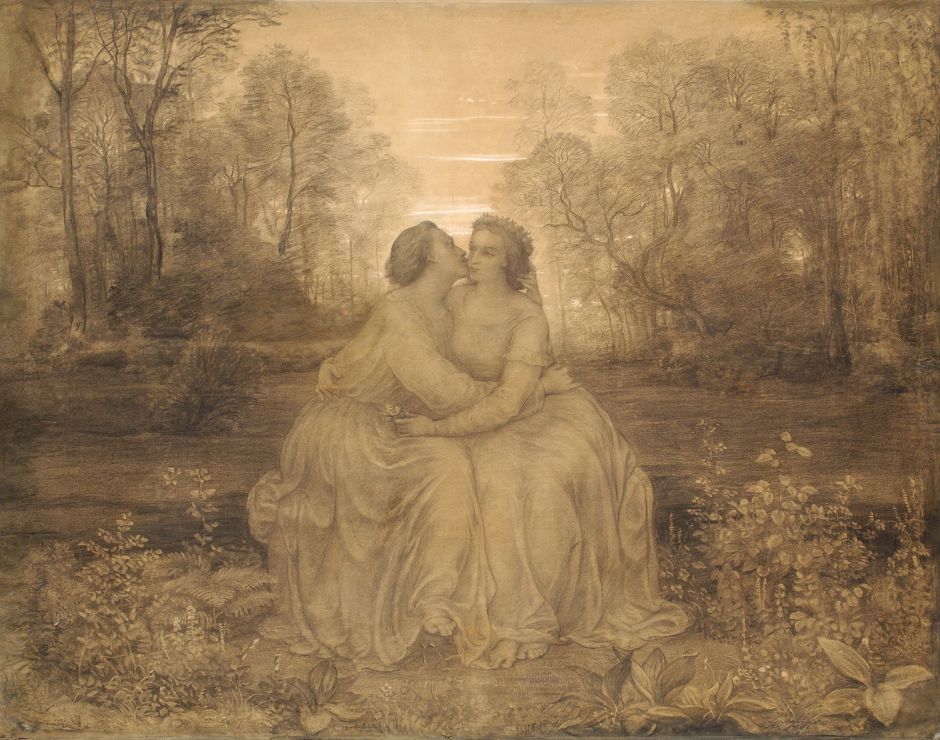This third article in the series covering Louis Janmot‘s (1814–1892) epic narrative series of paintings, Le Poème de l’âme (Poem of the Soul), shows the first half of the second group, drawn in charcoal. I believe that these are each of about 130 x 145 cm in size, and were completed during the decade 1860-70, and certainly by 1881.
The first group of 18 paintings in oils showed the story of a baby growing into a man, and his relationship with his dual soul, depicted as being female. Once he attained manhood, his soul departed and returned to heaven, leaving the young man alone on earth.
These sixteen drawings trace the man’s journey through life, much in the way that Hogarth did, in a moralistic story of sin and redemption.
In trying to reassemble this series, I have discovered serious discrepancies in the naming and ordering of the charcoal drawings, between the various pages and documents which claim to list them. I have done my best to give them the correct titles and place them in the sequence intended by Janmot. If you find any errors, please let me know so that I can correct them here.

19 Solitude
As the oil paintings had closed, so the drawings start with an image of solitude: the young man is now in a seemingly endless wood, leaning back and looking very pensive.

20 The Infinite
He goes down to the sea, where the waters stretch out to the horizon, and the sea and sky appear endless. He is still alone, pining for his soul, and in search of his role as an adult.

21 Dream of Fire
He falls asleep and dreams of a group of young people, innocent in their nakedness. One, resembling his soul, approaches him. She was wearing a garland of flowers similar to those which his soul had worn in his youth, but the garland has fallen into fragments.

22 Love
He falls in love with a young woman, and they court out in the countryside, sat by a placid lake in the forest. She wears the same floral garland on her head. (This appears to be in his dream still.)

23 Goodbye
His love runs away from him, across the sea, as if she was just his dream of his soul again. Behind him the broken flowers reflect his broken love.

24 Doubt
He is alone again, wandering in the hills and mountains, with doubt growing over his faith, his soul, and God.

25 The Spirit of Evil
As he sits on a rock, his doubts now festering, an evil spirit draws up behind him, bringing with her the seven deadly sins. These are inscribed in Latin on the flag she bears, and embodied in the seven spirits which accompany her. He gives in to their temptation.

26 The Orgy
We next see him at a modern-day bacchanalian orgy, drink flowing freely, and dancing with a young woman whose virtue seems as scant as her dress. A long table, which is reminiscent of the scene for the Last Supper, is now being danced upon by an inebriated and wanton woman, and others are scattered around the room.
References
There are several books available in French, notably those written by Élisabeth Hardouin-Fugier who is the leading expert on Janmot and this series.
Wikipedia (in French).

